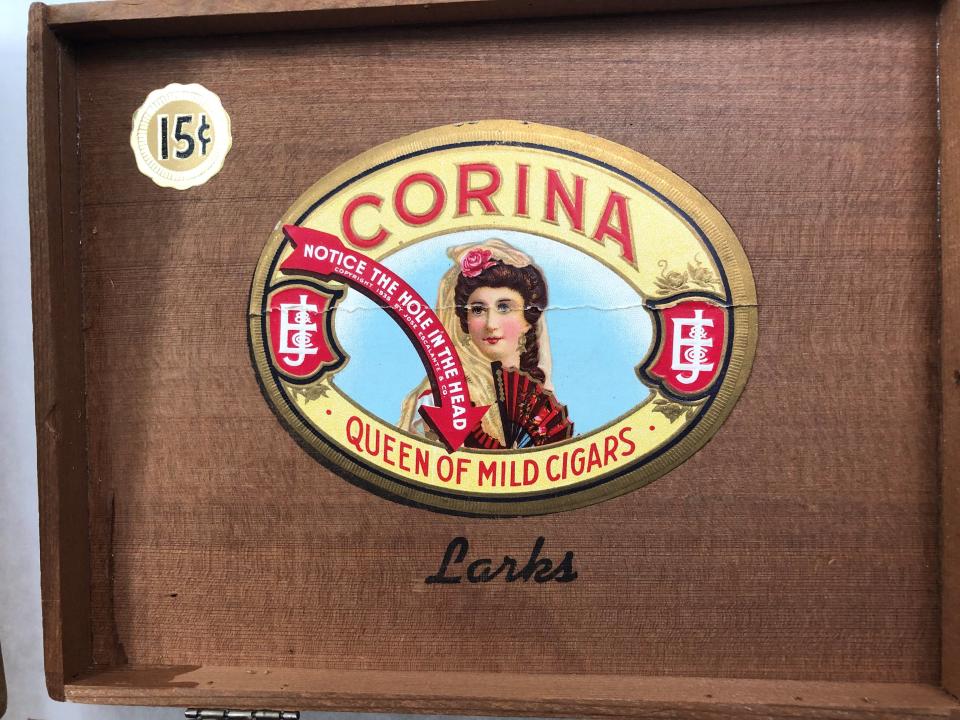Antiques: Cigar Boxes aren't just for cigars
Those of us of the Social Security generation likely remember our fathers for a lot of things. Those men of the Greatest Generation were a special lot with many different interests and practices. All the same, there were a few habits that they shared, perhaps drawn from their own father's lives.
My dad — and perhaps yours — used to store his tie tacks, money clip, cufflinks, spare change and other pocket stuff in an old wood cigar box with a colorful label. I don't know what finally happened to that old box, but I've always liked cigar boxes as a result. We just got in a few at the gallery, each undoubtedly packed with its own silent memories. Here's a bit of history.
Not surprisingly, cigar boxes were invented to hold cigars, the origins of which go back at least a thousand years to Mayan times. Somehow the Mayans figured out that inhaling the fumes from dried tobacco leaf tightly rolled in leaves of palms or plantains and then lit would yield a relaxing experience. Early Spanish explorers — including Christopher Columbus — were among the first to export the practice back to their native countries, and before long Spain and Portugal were full of cigar smoking enthusiasts. It was Spain that found that Cuba had the perfect environment for growing aromatic tobacco and thus began a tradition that continues to this day.
As time passed, various governments needing to find new ways to fund their war efforts turned to taxing luxury goods, including tobacco. The problem was that cigars were often packed and shipped in inexact bundles, making them difficult to quantify and thus tax. Smuggling to avoid tax was a further problem, lucrative for the smuggler but profitless for taxing entities.

Finally, one of Cuban's leading cigar brands, H. Upmann, came up with the idea of packing cigars in uniform boxes of 25, 50, 100 and 250 smokes. Naturally, taxing authorities loved the idea and quickly required stamp taxes on every box. Cigar boxes have now been standard to the industry for more than 300 years.
Original cigar boxes were made of wood, ideally Spanish cedar due to its pleasant look, smell and ability to keep hungry bugs at bay. Other woods such as mahogany and oak have also been used, as have cardboard, plastic and tin. There are four or five standard configurations, and fancy labels both on the top and bottom lids have long been part of their charm. Often the cigar smell within the wood boxes will linger for months or even years after the cigars are gone, leaving an aroma pleasing even to non-smokers. No other box that sits comfortably on top of a dresser or in a drawer will engage the senses as those that used to hold cigars.
So, there you are. If you didn't get to keep your dad's cigar box, our gallery and others like us have several to choose from. They're inexpensive, less than an exotic cup of coffee, useful and so evocative of another time and place. Cuban cigars and those from similar environments like the Dominican Republic still lead the pack in cigar box label design, often with the liberal use of gold or silver foil. Still, it's the boxes themselves that hold the character and the memories. The iPhone generation may not remember, but there are still those of us that do.
Mike Rivkin and his wife, Linda, are longtime residents of Rancho Mirage. For many years, he was an award-winning catalogue publisher and has authored seven books, along with countless articles. Now, he's the owner of Antique Galleries of Palm Springs. His antiques column appears Sundays in The Desert Sun. Want to send Mike a question about antiques? Drop him a line at info@silverfishpress.com.
This article originally appeared on Palm Springs Desert Sun: Antiques: Cigar Boxes aren't just for cigars

